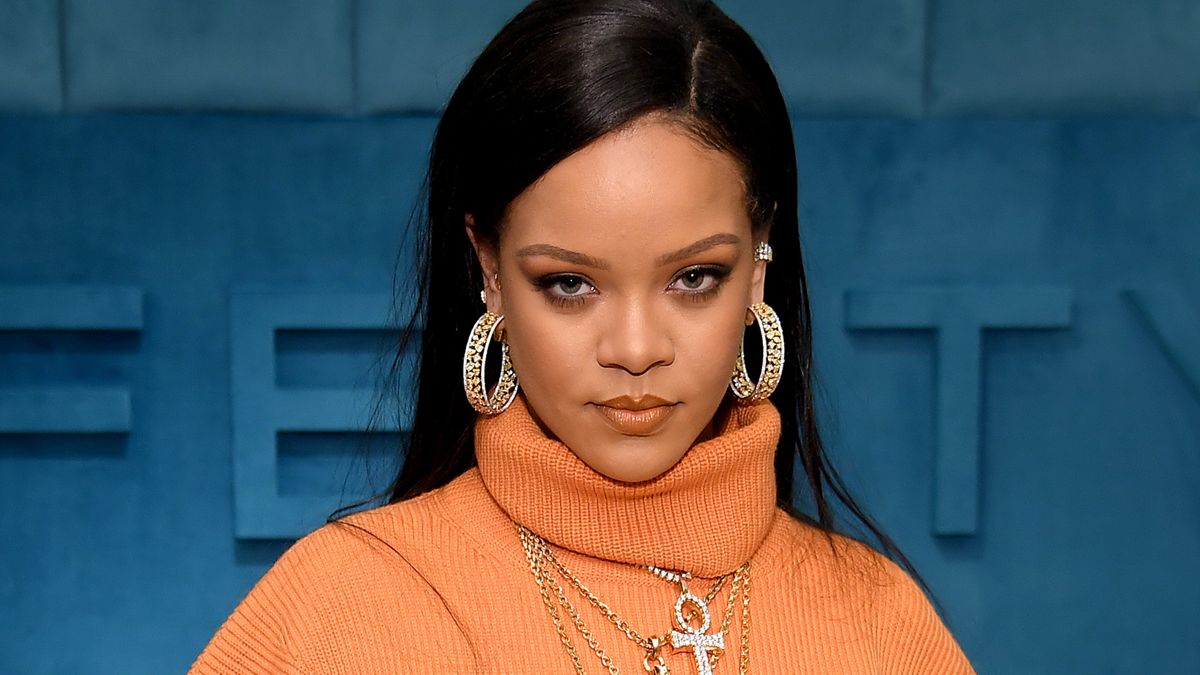How Rihanna’s crusade for inclusivity changed the game forever
Ha’Londra Dismond, Senior Creative Strategist, the projects*, looks at how one woman exerting her vision and power through inclusive marketing led to a multi-million dollar brand.
If we’re going to talk about Fenty (and we are), we need to start with one simple fact: Rihanna's $100 million brand is built on the foundation that no one should go unseen in the fashion and beauty industries.
Rihanna’s conscious decision to create a brand that celebrates the diversity and uniqueness of every person who might be even remotely interested in the brand offered never-before-seen respect and representation for traditionally “othered minorities” and frequently-ignored consumers. Instead of projecting an image of a white, thin, aloof woman to create an unattainable aspiration of what beauty is meant to look like, Rihanna flipped the script on the beauty world entirely and put diverse women front and center—and it mattered.
Rihanna created a humanized path to the beauty and fashion worlds and made inclusivity the business model and not the trend.
But in a landscape where many beauty brands are beginning to diversify their product lines, why did Fenty make such an impact? It’s largely because its approach is authentic. Rihanna understood firsthand the gaps in the beauty space because she experienced them, so when she entered the already saturated celebrity product world, she did so with the intention to meaningfully fill those gaps. This involved thinking about the people who don’t get to see themselves represented in the beauty or fashion industries—whether they be trans, non-binary, “plus-sized,” or dark-skinned.
Credits
powered by
-
- Production Company Good Company/USA
- Director Charles Mehling
-
-
Unlock full credits and more with a Source + shots membership.
Credits
powered by
- Production Company Good Company/USA
- Director Charles Mehling
- Music/Sound Design Wonderboy Audio
- Creative Director Mark Mayer
- Editor Loic Maes
- DP Max Goldman
- Executive Producer Jonathan Lia
- Talent Rihanna

Credits
powered by
- Production Company Good Company/USA
- Director Charles Mehling
- Music/Sound Design Wonderboy Audio
- Creative Director Mark Mayer
- Editor Loic Maes
- DP Max Goldman
- Executive Producer Jonathan Lia
- Talent Rihanna
At launch, Rihanna’s vision for Fenty Beauty came to life, and it was exactly what she promised. With 12 women of different ethnicities and skin tones appearing front and center in the first campaign, it was clear that this was something different. And it wasn’t a one-off success or a performative stunt to attract buzz— Fenty’s muses have continued to be used in marketing materials, on their website, and social media to connect with their customers in unfiltered and organic ways. Right out of the gate, it was made clear that unlike many other beauty brands, diversity and representation wasn’t an afterthought, it was the centerpiece of their brand positioning.
Rihanna flipped the script on the beauty world entirely and put diverse women front and center—and it mattered.
Post-launch, continual customer listening and intersectionality propelled brand loyalty and consistently high sales. Offering an unheard-of 40 different shades of foundation and extended shades of light and dark foundation, Fenty Beauty constantly offered a breath of fresh air to many people of color, and happy customers have repeatedly taken to social media to share their joy of finally being seen. And Fenty Beauty meets them there. Knowing that its audience is online, outspoken, and culturally fluent, Fenty posts tutorial videos and vlogs on YouTube, memes on Twitter, and is responsive to social trends in real-time.
As the brand has grown and innovated, Fenty has continued to maintain its raw and relatable positioning, even going as far as giving every customer a front-row seat to its annual fashion showcase—an event that in the fashion industry would normally be an invite-only for the glitterati—by streaming it on Amazon. And you can bet that when it came to taking Fenty to the runway, Rihanna built on the strategy that helped to make the beauty line successful: focusing on the unseen diverse consumer and designing with them in mind.
With the old guard of lingerie empires crumbling, the Savage X Fenty line launched with sizes 00-24, immediately subverting any and all assumptions about who “should” be wearing lingerie and creating a safe space for every shape, size, race, and gender.
As her intersectional approach dominated beauty store shelves and fashion runways, Rihanna cemented herself as not only an unapologetic musician and style icon but perhaps the most innovative celebrity entrepreneur of our generation.
Rihanna understood firsthand the gaps in the beauty space because she experienced them, so when she entered the already saturated celebrity product world, she did so with the intention to meaningfully fill those gaps.
As the brand grew, Fenty kept up its community-first social strategy, turning its fans into brand loyalists by giving them the tools to tell their own stories for the brand, all the while actively engaging with them. Allowing the fanbase to create engagement, shares, and interaction for the brand is Fenty’s sweet spot and has been one of the many ways it has found success. They make the consumer feel seen and ensure that their opinions are valued. The brand’s interaction with the consumer is personal because Fenty has created that space that feels authentic.
Right out of the gate, it was made clear that unlike many other beauty brands, diversity and representation wasn’t an afterthought, it was the centerpiece of their brand positioning.
Rihanna created a humanized path to the beauty and fashion worlds and made inclusivity the business model and not the trend. This path of inclusivity has caused a wide effect on the beauty industry and made the Fenty Effect a goal that all brands, beauty and otherwise, want to attain.
The bottom line is that Fenty is successful because of Rihanna—an artist, designer, fashion icon, and Black woman who wanted to fill the gap of the forgotten and celebrate all women of all shapes, sizes, and shades. By taking the time to create a brand that is a direct reflection of who she is today, authentic, bold, and unabashedly her, Rihanna changed the game forever and there’s no doubt that whatever is next for Fenty will be a smashing success.
)














